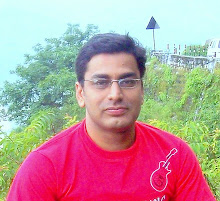Poor, Rich India
Wednesday, September 3, 2008
Even while a lot of people are wringing their hands about the on-again, off-again Indo-US nuclear deal, a far more crucial potential deal is being overlooked, a deal between two countries. No, not between India and Pakistan over Kashmir, important enough though that is. This deal is between the two seemingly adversarial countries which are the two Indias. One is the India which is home to one-third of the entire world’s poor, with a proportionate population higher than that of sub-Saharan Africa living on less than $2 a day (75.6 per cent and 72.2 per cent, respectively); over 456 million, 42 per cent of all Indians, or four out of every 10, subsist below the international poverty line of $1.25 a day, calculated after taking purchasing power parity (PPP) into account. The other India is an inchoate India, a India in waiting, as it has been for over 60 years. This potential India is said to be worth some $54 billion, which is more than the individual GDPs of more than 100 of the world’s countries. This India-in-waiting is tiny, comprising an aggregate area reportedly of just 92,000 acres, half the size of Mumbai, and moreover is scattered in bits and pieces all over the country. It is the India of the many industrial, mining, power and other projects which are on hold till the politically and socially sensitive issue of rehabilitation and compensation for acquired land — brought into sharp focus at Singur and Nandigram, to name just two recent flashpoints — gets settled, one way or the other. According to a report in this paper, 15 projects involving 91,865 acres and some five lakh farmers are currently deadlocked, representing Rs 2.43 lakh crore of unrealised investment. What is the key to unlocking this waiting wealth which would go a long way in resolving that old paradox: that India is a rich country inhabited by poor people? The answer is deceptively simple in theory, hugely problematic in practice, as evidenced by land-industry disputes as diverse as that of the Nano project and the Tehri dam. These, and a score of similar literally life-and-death — or livelihood-and-death — controversies, have thrown up fundamental, and so far tragically unanswered, questions. Under the law of ‘eminent domain’ the state has the right to acquire private land for ‘public benefit’. But which is the public which benefits: the tribal or the agriculturist whose land is acquired, or the contractor or entrepreneur who sets up shop there? What is fair compensation? Market value of the land? If so, who decides what that market value is, and how it is to be determined? Cash compensation apart, how do you compensate an individual or a community for the loss not only of land but, perhaps more importantly, the loss of an often centuries-old way of life that the land represented? No single set of answers can — or ought to — be found for such questions. Cookie-cutter, one-sizefits-all solutions would do far more harm than good. But that doesn’t mean that a top national priority oughtn’t to be given to finding a variety of ways of honestly and equitably brokering a deal — or rather, a spiderweb of many deals — between the two Indias — the India of entrenched poverty, and the India of stalled prosperity — to mutual advantage. Can the so-called ‘political will’ be found to strike such a win-win deal? No. Not if we assign ‘political will’ exclusively to the professional political class who — as seen at Singur and elsewhere — for their own vote-catching machinations would rather be part of the problem than part of the solution. So where’s the ‘political will’ to be found? How about looking for it in informed public opinion. In civil society. In the seminars and classrooms of educational institutions like the IIMs and IITs. In the chambers and federations of commerce and industry. In village panchayats and rural pathshalas. In NGO networks. In both the sundered Indias whose only hope is to be made whole and one again.



0 comments:
Post a Comment